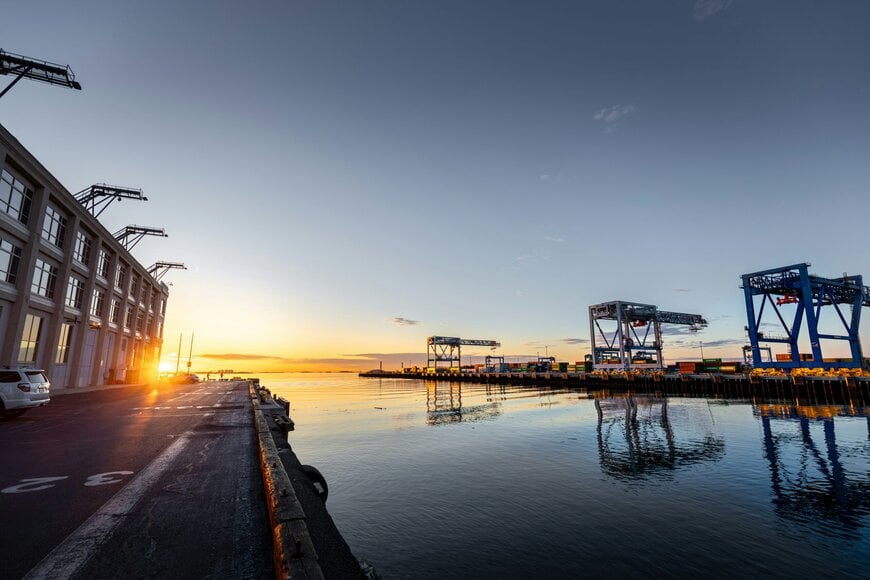The Journey of a Container Through a Container Terminal
How Petrosoft.pl Systems Support Modern Intermodal Logistics.
www.petrosoftinc.com

The journey of a container through a container terminal is a dynamic logistics process that requires not only excellent coordination of physical operations but also an efficient and integrated system environment. From the moment the container leaves the ship’s deck to its departure from the terminal – by rail or road – every step demands precise synchronization. At Petrosoft.pl, we design IT systems that not only support but actively organize and optimize this process.
Vessel Unloading – The First Step Under TOS Supervision
Everything begins when the vessel arrives at the port and the quay crane starts unloading containers. At this point, our Terminal Operating System (TOS) automatically registers the container unloading operation, assigns it the “unloaded” status, and allocates its location within the terminal yard. The system collects key data about the container – its number, parameters, weight, and owner – ensuring full transparency from the very beginning.
Coordination of Human and Equipment Resources – The Role of TSS
Simultaneously, the TSS (Terminal Staff Scheduler) system schedules the work of operators and terminal vehicle drivers who transport containers between the quay, yard, siding, and other operational points. TSS optimizes workforce and equipment schedules to maintain continuous and efficient processes regardless of time or traffic volume.
Rail Transport – Full Support From RailSoft
The next step depends on the selected transport mode. If the container is to leave the terminal by rail, it is managed by the RailSoft system. Terminal vehicles transport it to the siding, where a crane places it on the designated railcar. RailSoft precisely indicates the loading spot and platform, and generates transport documents in accordance with railway standards. The system monitors not only the loading moment but also the entire transport progress and all related train documentation. It serves as both a planning tool and a digital guardian of railway safety and compliance.
Road Transport Handling – Integration Through VBS
For container export by road, the process is managed by our VBS (Vehicle Booking System). The forwarder announces the truck’s arrival in advance, and upon its arrival at the terminal gate, the system verifies the data, authorizes the entry, and provides the driver with detailed instructions for the loading point. Using GPS geolocation, VBS guides the vehicle to the designated area, where TOS receives a confirmation signal of the truck’s presence and initiates the loading operation via crane. After loading, the truck may be directed to a technical or weighing station if required, and then exits the terminal – this is also recorded by VBS.
Integrated System Ecosystem – Full Visibility and Control
A key component of the entire environment is the full integration between systems: TOS, TSS, RailSoft, and VBS do not operate in isolation, but form a cohesive ecosystem where data, statuses, and documents are updated in real time and accessible to all authorized operators. This allows precise container tracking, equipment load control, emergency response, and performance reporting.
A Modern Terminal Is System-Managed Logistics
Thanks to this approach, a container terminal is no longer just a transshipment yard – it becomes a digitally managed, automated organism where Petrosoft.pl technology acts as its nervous system. Our solutions not only support but also organize and synchronize intermodal logistics, making it more predictable, safe, and scalable.
www.petrosoft.pl

